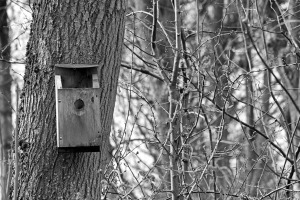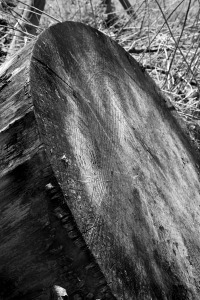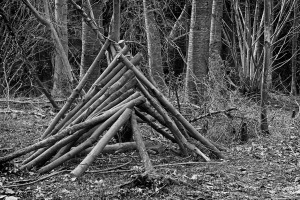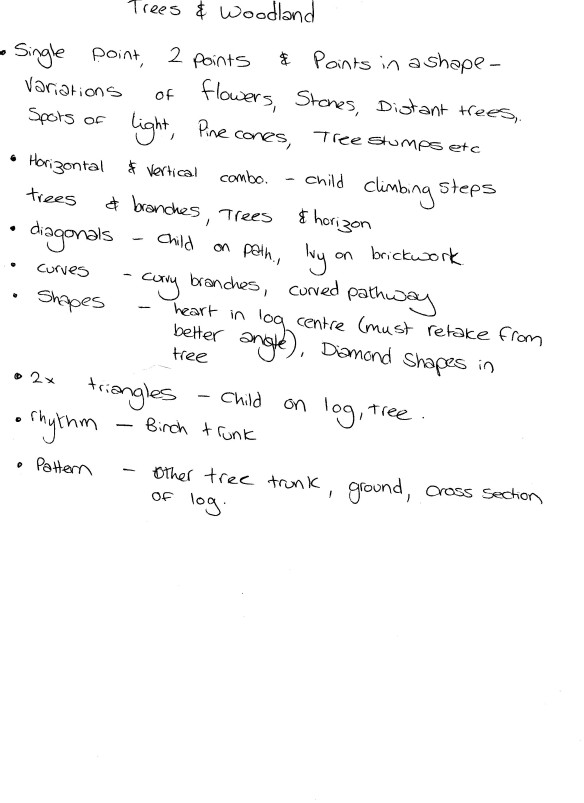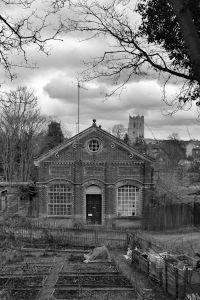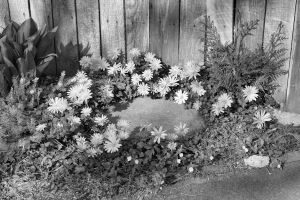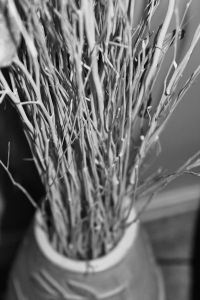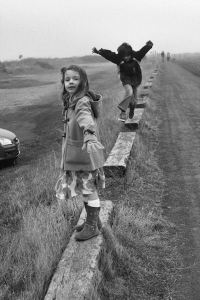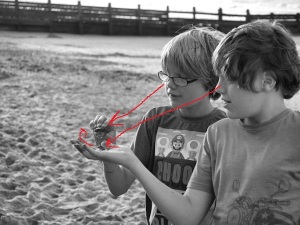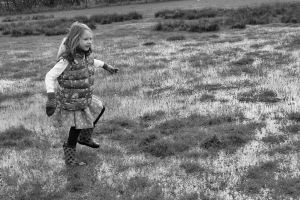When I took the photographs for this assignment I had initially decided that I would submit them in black and white as I had completed all the exercises in this unit in monochrome as suggested in the coursebook. When it came to converting the images I had taken into monochrome, however, I wasn’t happy with how they looked so decided to submit the assignment in colour (full reasoning can be found here). My tutor mentioned in my feedback that he was surprised that I had chosen to submit in colour as he preferred the black and white. Since submitting this assignment originally I have learned much about photoshop and am better able to tweak contrast and levels and have been able to create much nicer monochrome images from my original colour ones. Therefore, I have decided to re-submit this assignment in black and white. Below are both my original submissions and their monochrome counterparts along with other changes I have made based upon my tutor’s feedback.
Single Point Dominating the Frame
Two Points
My tutor suggested that my first image did not have much impact and perhaps it would have been better to take the photograph closer to the ground. I did struggle somewhat with this particular image, finding 2 points in a woodland was difficult and I felt the flowers against the tree worked well. Once converted to black and white it was clear that it was the colour of the flowers which made them into good points rather than their form. I decided to replace the image with one which I had taken with 2 points in mind but had not looked good in colour.
Several Points in a Deliberate Shape
This image was another I found difficult and although my tutor rightly suggested that the image would work well as an implied triangle, I liked the way the cones formed the shape and still wanted to use it. Once the image was converted to black and white though, the cones became lost in the grass and the image did not work at all. I decided to retake the image but this time from a different angle so that the shape of the cones would make the points rather than the contrast in colours. In the re-shot image I put the camera low on the ground and the pine cones on a dirt/wooded floor rather than on grass. I like the chink of light in the background which shows us the shape of a tree rising from the ground and although the triangle created by the cones is a narrow one, it is still a definite shape.
A Combination of Horizontal and Vertical Lines
In the second of these images my tutor pointed out that the vertical lines overpowered the horizontal ones somewhat so I decided to crop the image in a lot to remove one of the vertical lines and zoom closer in to the horizontal ones. When I converted this shot to black and white I increased the contrast as well as lightening the shadows to give the image a little more impact.
Diagonals
Curves
My tutor thought that this cross-section of a tree trunk lacked imagination, that the straight-on angle it was shot at caused it to loose the impression of the curved shape of the trunk. I decided to retake the image from a different angle, my tutor suggested down low would work and I chose to shoot from almost side-on so I could still capture some of the tree rings as well as having a curve moving through the photograph.
Distinct, Even if Irregular, Shapes
At Least Two Kinds of Implied Triangle
Triangles were the other photographs I really struggled with in this assignment. Although many of my images contained triangles of one sort or another, they were always photographs which I had taken with another title in mind. My tutor felt that the two images I submitted for Triangle were far too obvious and I agree. I have decided to remove the first of these from the assignment entirely, I realise now that not only is it a very obvious triangle but the picture does not really have very much dynamic to it. The second triangle I have decided to keep as although it is perhaps not as implied as it might be, I really like this shot, even more so since converting it to monochrome.
The first of the other 2 triangle images was taken along a woodland path the triangles are mainly created by the pathway and trees growing smaller as you head towards the vanishing point near the centre of the image. This photograph was, in part, inspired by the Diagonal photograph above but rather than dividing the frame from corner to corner I used the perspective created by the long pathway and wide lens to show the triangles.
The third triangle image I am submitting is inspired by my original Two Points image though I took my tutor’s advice and got right down on the ground below the flowers. In this image the triangles are created by the flowers, their stems and also the angle at which the tree trunk moves through the image.
Rhythm My tutor commented that the fence did not stand out from the background particularly well in this image and suggested that if I were to convert to black and white, perhaps I could use a dodge tool on the fence to make the rhythm it creates clearer. I did this and also tweaked the contrast a little and I think the result works well.
Pattern My tutor liked this shot although did suggest I up the contrast levels to bring out the pattern more.


